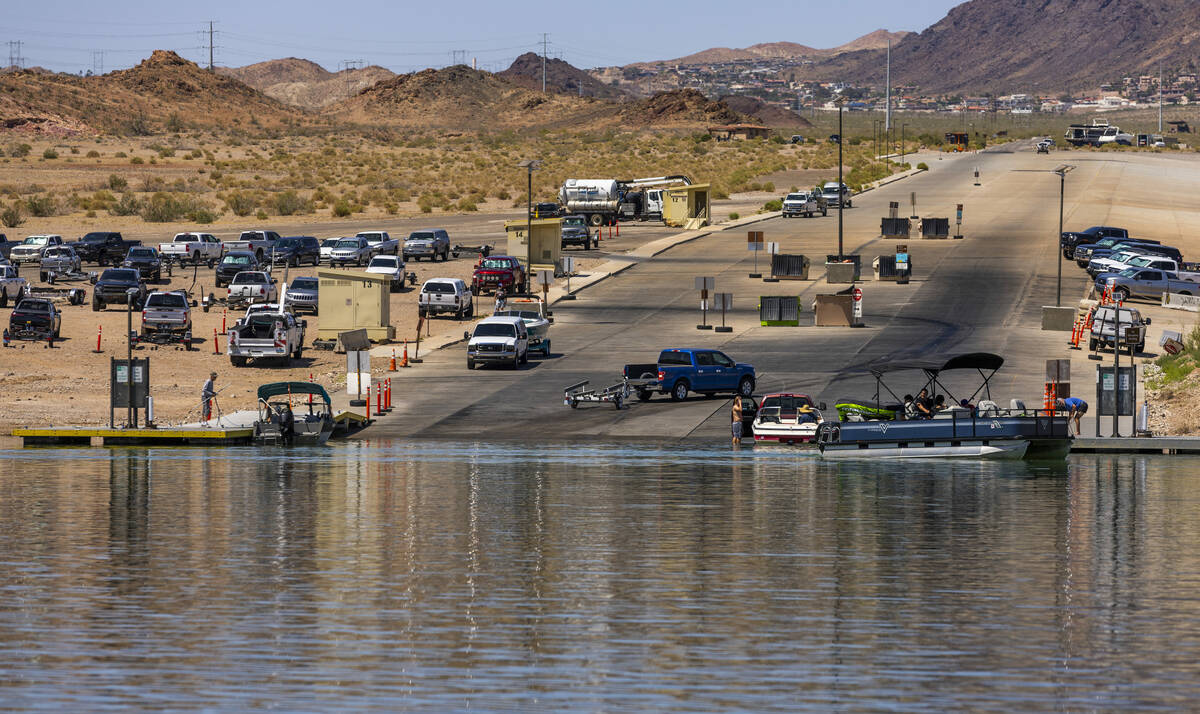How to stay safe at Lake Mead, one of the country’s deadliest national parks
Lake Mead is remarkably vast, covering approximately 247 square miles. That’s a lot of water to get lost in — and some people don’t ever return.
Since 2000, an average of 25 people have died every year within the Lake Mead National Recreation Area in drowning and boating accidents, according to National Park Service data obtained through a public records request.
Southern Nevadans, too, are all too familiar with the lake level’s steady decline over the past decade. The lake reached a record low in 2022 and the U.S. Bureau of Reclamation’s two-year projections place the water level just barely above that number.
What lies below the surface of Lake Mead has long captured national interest. Skeletal remains have now emerged along with relics of history including once-sunken boats.
But low water levels also pose a recreational challenge — a few feet of drawdown can mean more for boaters to pay attention to.
“As water fluctuates, hazards change,” Trouper Snow, who heads the park’s law enforcement division, said during a media boating safety tour Wednesday. “We have to remind people that this is a natural environment and things are always changing.”
Rangers at the ready
Several agencies coordinate Lake Mead rescues, including the state Department of Wildlife and the Metropolitan Police Department.
Someone is always available to bring people safely to shore, Snow said, and more rangers are on duty during peak seasons and hours of the day. Most boaters carry radios, which can quickly notify the park’s law enforcement dispatch on-site.
“Emergencies can happen 24 hours a day,” he said.
Fires occur much less often than rescues on Lake Mead. However, the park service has a fireboat, which is named after a ranger who died from a fatal heart attack during a dive on the lake. Another boat is stored on Lake Mohave to the south.
The fireboat’s powerful cannon can draw up 1,500 gallons of water per minute from the lake, said Matt Stark, deputy chief of law enforcement. Between the two reservoirs, there are only one or two fires per year, usually caused by improper boat usage, he said.
During the media tour, Stark called out to a boater coming too fast into Hemenway Harbor — something he said shows that rangers prefer to educate boaters before being quick to issue a citation.
Don’t drink and drive
Going into the summer, officials are focusing on two safety tips: Wear a life jacket and don’t drive a boat while drunk.
“Of all the accidents that we’ve had out here, no one on Lake Mead dies who has a life jacket on,” Stark said.
Nick Duhe, who oversees Southern Nevada boating safety for the Department of Wildlife, said even those who opt for more casual kayaks or canoes should have life jackets aboard. In addition, boating safety courses are a good idea for even the most infrequent boater, he said.
The bottom line is that rescuers often put their lives on the line to save people, he said.
“If you fall in, you’ve now compromised other people who have to save you,” Duhe said.
Contact Alan Halaly at ahalaly@reviewjournal.com. Follow @AlanHalaly on X.




























